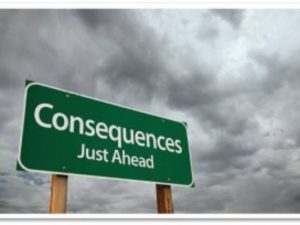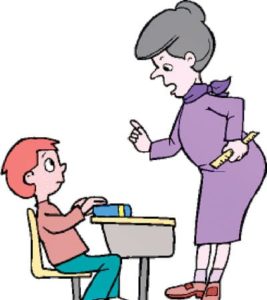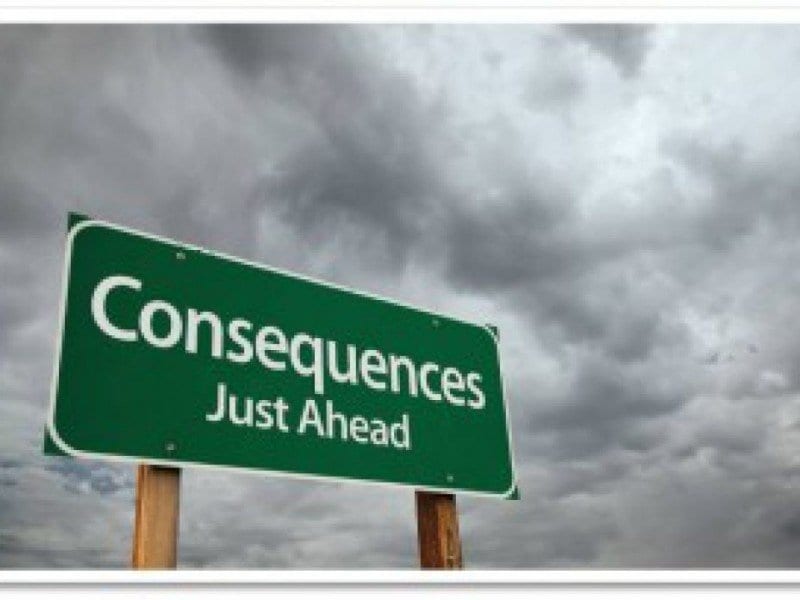Student Contributor: S. Shier
 Logical consequences are consequences given to students that specifically align with what they did wrong. It is helpful because the student will know exactly what it is that they were not doing correctly and how they can fix it so as not to repeat it in the future.
Logical consequences are consequences given to students that specifically align with what they did wrong. It is helpful because the student will know exactly what it is that they were not doing correctly and how they can fix it so as not to repeat it in the future.
Logical consequences are used quite often throughout schools and classrooms. To be used effectively though, the logical consequence must align with the behavior being corrected. If a student is having troubles sitting still or focusing during class, it would not do well to give that student the consequence of taking away their recess time as that is when they can get all that jittery energy out of their system. A better alternative might be for the teacher and the student to sit down and have a conversation about why the student struggles to focus during class and find a solution that works best for the student which could be moving the student to a different place in the classroom or allowing them to walk down the hall and back whenever they focus for a full 15 minutes during class time. This also allows for the student to be aware of the behavior that is trying to be corrected and leaves no confusion as to what they are doing wrong. My experience with logical consequences has not quite been given out this efficiently, but I am hoping that this is something that is being changed.
 I have placed this tool in the corrective phase because it is something you would implement after the wrong behavior has happened. It is intended to correct the behavior or help the student to understand how to correct the behavior. It can relate to the supportive phase in that the logical consequence given should also help support the student to not do the same behavior again. I placed the tool in essentially all three theories of influence as there are many different ways to implement the consequences. The teacher directed teachers would choose their logical consequences themselves and do what they feel is the best consequence for the situation. I do not particularly feel like that is the most effective way to prevent the student from doing the behavior again which is why I feel like being collaborative with your students is the best way to implement a consequence. It will help to correct the student’s behavior to be more permanent by making the student aware of the behavior that they are doing wrong and creating a stronger relationship between the student and the teacher. The student directed aspect of the logical consequence is the trust a teacher has in the student that they will choose to try and change their behavior from the logical consequence.
I have placed this tool in the corrective phase because it is something you would implement after the wrong behavior has happened. It is intended to correct the behavior or help the student to understand how to correct the behavior. It can relate to the supportive phase in that the logical consequence given should also help support the student to not do the same behavior again. I placed the tool in essentially all three theories of influence as there are many different ways to implement the consequences. The teacher directed teachers would choose their logical consequences themselves and do what they feel is the best consequence for the situation. I do not particularly feel like that is the most effective way to prevent the student from doing the behavior again which is why I feel like being collaborative with your students is the best way to implement a consequence. It will help to correct the student’s behavior to be more permanent by making the student aware of the behavior that they are doing wrong and creating a stronger relationship between the student and the teacher. The student directed aspect of the logical consequence is the trust a teacher has in the student that they will choose to try and change their behavior from the logical consequence.
More Information –
Tool Source: Vitto (2003), “Creating and Implementing Effective Consequences”
https://www.educationworld.com/a_curr/columnists/charney/charney007.shtml



We talked about this in our recent PBIS PD. If the consequences don’t make sense, they are now punishment and wide open to judgement about their fairness.
I like to speak to a student with the first warning to let them know ahead of time, that if they make the same choice; it will have meaningful consequences.